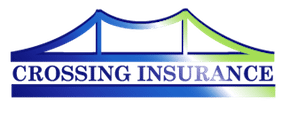How to Avoid Hitting a Deer

Autumn is beautiful, but it also introduces some fall driving hazards… deer collisions being one of them. From October to December, mating and hunting season make deer go on the move. For drivers, that means you’re more likely to hit one.
According to a 2022 study published in the journal Current Biology, about 2.1 million deer-vehicle collisions happen in the U.S. each year, causing more than $10 billion in economic losses. But have you ever wondered how your auto insurance can cover hitting a deer? Are deer collisions covered by comprehensive or collision coverage?
Before you get too worried, here are some helpful tips on how to avoid hitting a deer… and how to handle things if you end up hitting one despite your best efforts.
How to Avoid Hitting a Deer
- Know where the deer are likely to be. Areas with high deer populations are normally marked with a bright yellow sign. Deer also tend to graze in wooded areas or open fields. When driving your usual route to work, be attentive to areas where you’ve seen deer in the past – they are likely to cross there again.
- Be alert at sunrise and sunset. Deer are more active during dawn and dusk hours.
- Use your high beams. When possible, use your high beams for better visibility. The extra light will help make it easier to spot a deer, or other animals, lurking alongside the road.
- Don’t rely on deer gadgets. Whether it’s a deer whistle, deer fence or other type of product to scare away the deer… don’t rely solely on them to keep deer away. Research isn’t exact on whether or not these products truly work. (Related: Fact or Fiction? Debunking 6 Common Myths About Deer)
- When you see one… you’ll probably see more. Deer travel in groups. If one comes across your path, proceed with caution in case there are more.
- Don’t swerve. Swerving isn’t always the safest option. Hitting a deer might often cause less damage than swerving to avoid it… and then hitting a more dangerous obstacle, like a vehicle in oncoming traffic.
- Wear your seat belt. If you do hit a deer, wearing a seat belt decreases your chances of injury.
- Spread the word. When friends or family head out on the road, let them know to be careful and alert. Even a simple reminder can help prevent deer collisions.
What to Do if You Hit a Deer
Taking the above precautions can help you avoid hitting a deer… but nothing can entirely rule out the possibility. Here are steps you can take after you hit a deer.
- Pull over. Move your vehicle to a safe place off the road. Don’t forget to turn on your hazard lights.
- Stay away from the deer. An injured deer can still lash out and hurt someone.
- Assess the damage. When you’re out of harm’s way, examine your vehicle and take photographs of any damage to your car. Use good judgment to know if your car is safe to drive or if you’ll need to call for a tow truck. Learn how to add Emergency Roadside Service to your ERIE auto policy.
- Call for help. Depending on the circumstances, consider calling the police or an animal expert. While it’s not always required to file a police report, it can provide evidence if you decide to make an insurance claim. If the deer is still in the middle of the road, a trained professional from animal control, the game commission or your local fish and wildlife service can move it away for everyone’s safety.
- Know if you should file an insurance claim. An insurance professional can help you make the decision based on the specifics of your auto insurance policy. Talking with someone you already know and who is familiar with the claims process can help put your mind more at ease.
Does My Auto Insurance Cover Hitting a Deer?
You can’t always predict if a deer will walk into your path, but if one does, we’re here to help get you back on the road as soon as possible.
An insurance professional like one of our local insurance agents can help you customize an auto insurance package that fits your needs and budget. Talk to a local agent in your neighborhood or get a free online auto insurance quote.
ERIE® insurance products and services are provided by one or more of the following insurers: Erie Insurance Exchange, Erie Insurance Company, Erie Insurance Property & Casualty Company, Flagship City Insurance Company and Erie Family Life Insurance Company (home offices: Erie, Pennsylvania) or Erie Insurance Company of New York (home office: Rochester, New York). The companies within the Erie Insurance Group are not licensed to operate in all states. Refer to the company licensure and states of operation information.
The insurance products and rates, if applicable, described in this blog are in effect as of October 2024 and may be changed at any time.
Insurance products are subject to terms, conditions and exclusions not described in this blog. The policy contains the specific details of the coverages, terms, conditions and exclusions. Your ERIE agent can offer you practical guidance and answer questions you may have before you buy.

A better insurance experience starts with ERIE.
Haven’t heard of us? Erie Insurance started with humble beginnings in 1925 with a mission to emphasize customer service above all else. Though we’ve grown to reach the Fortune 500 list, we still haven’t lost the human touch.
Contact Crossing Insurance Group today to experience the ERIE difference for yourself.

